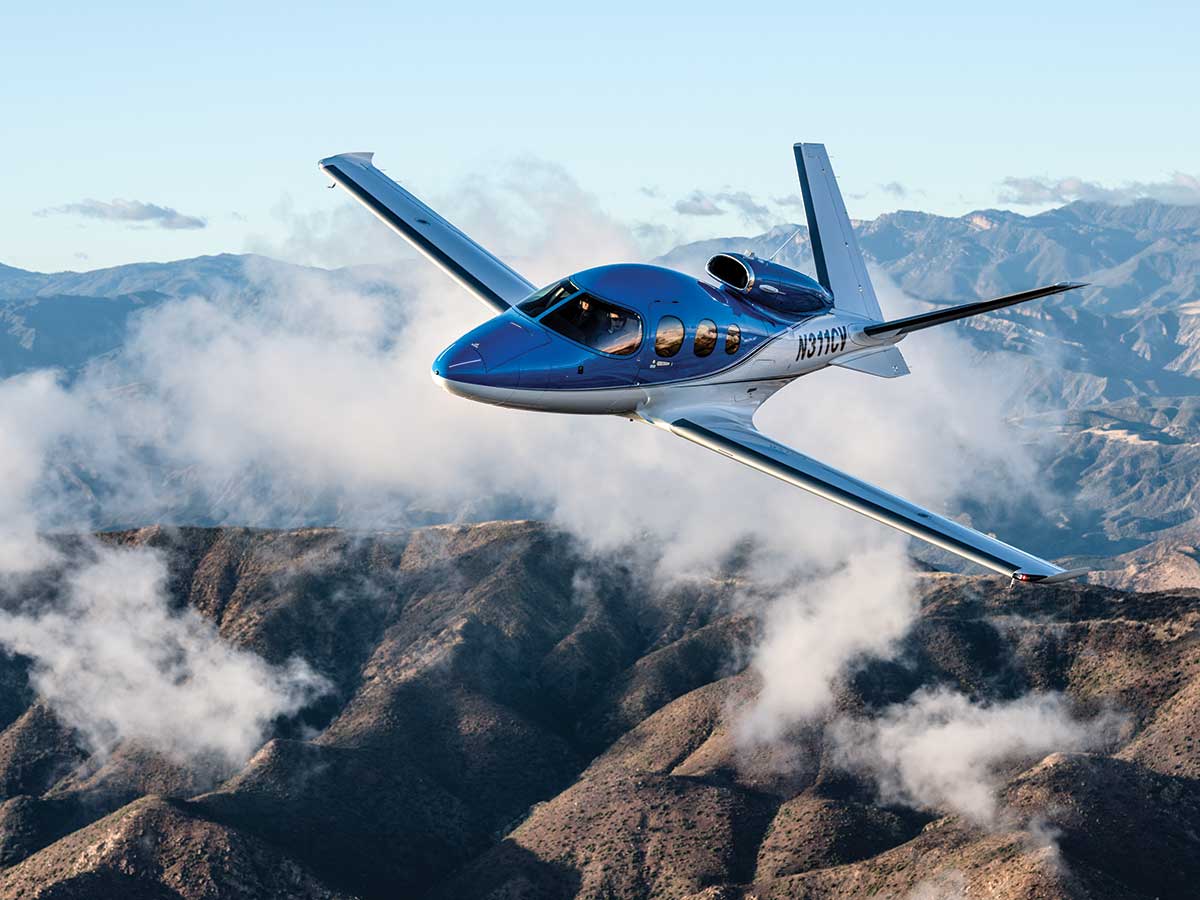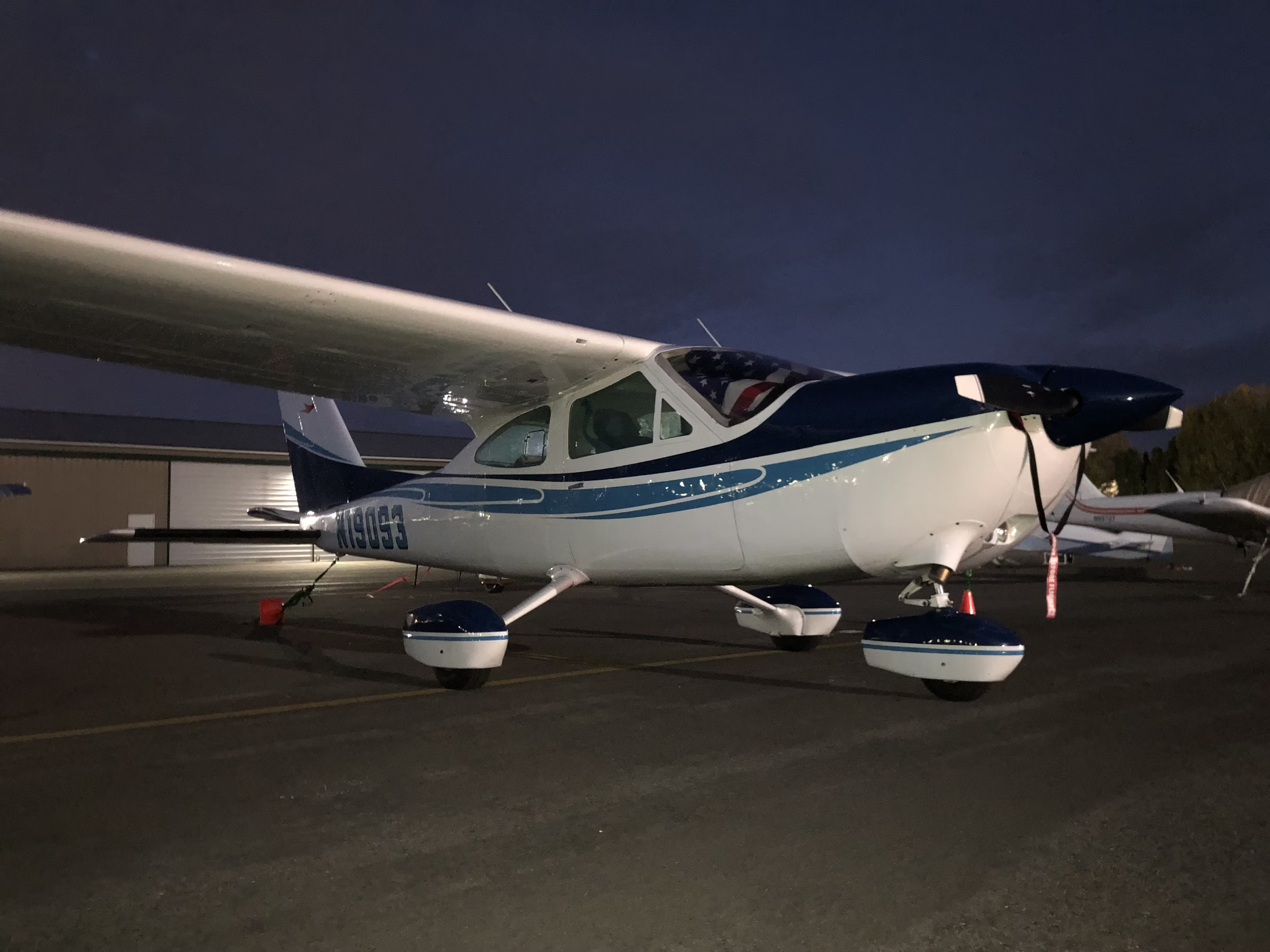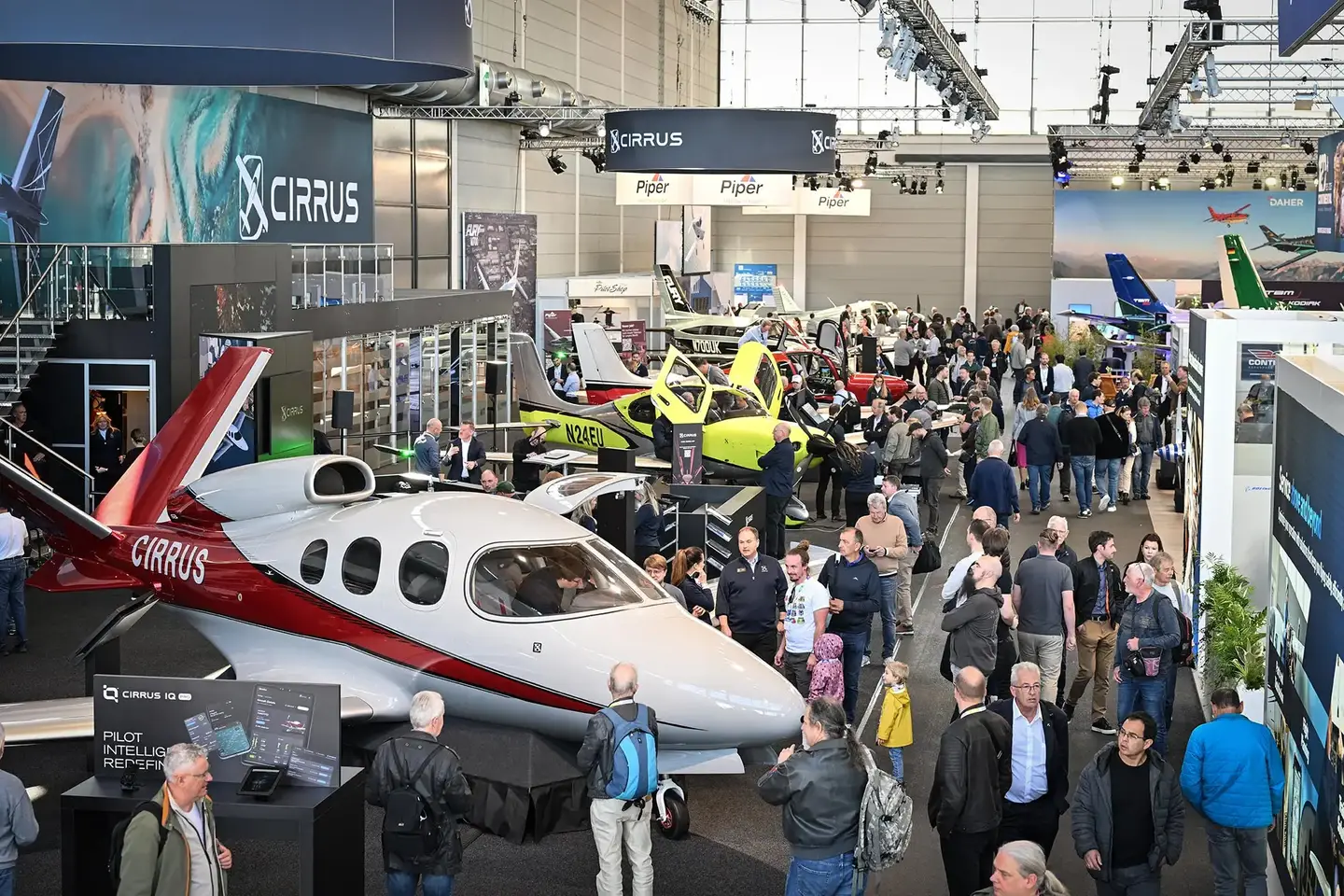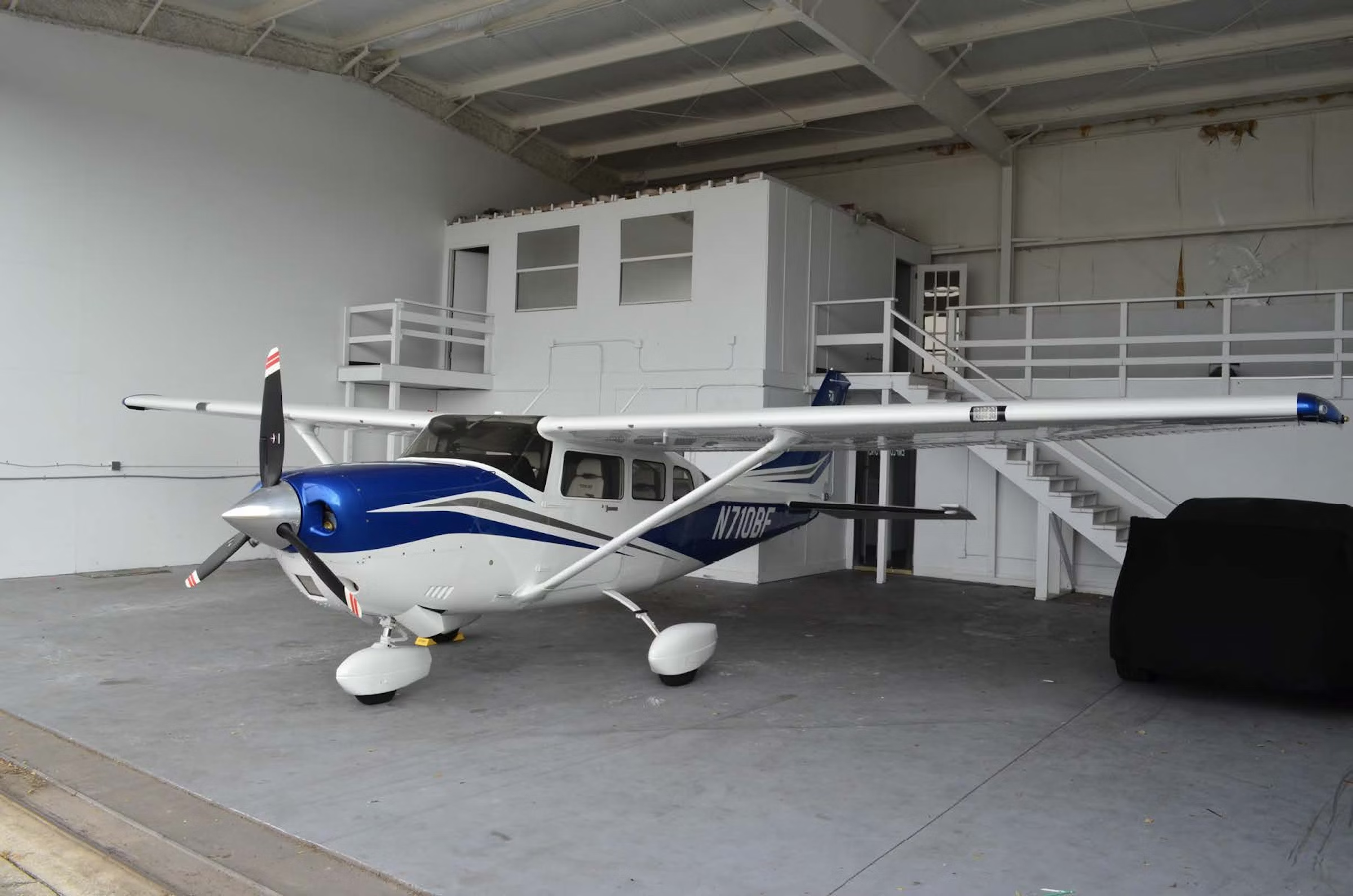
Customers began taking delivery of the 2019 G2 Vision Jet in January 2019. Cirrus Aircraft
What should an aircraft manufacturer do with a talented engineering team that just wrapped up the successful certification test program for a jet that would go on to win the Collier Trophy and Flying Innovation Award in the same year? One option would be to put them straight back to work developing the next iteration of the airplane. That’s just what Cirrus Aircraft chose to do in early 2017 while the ink was still fresh on the SF50 Vision Jet’s FAA approval documents. The result is a second-generation product featuring a multitude of technology advances, creature-comfort enhancements and performance improvements that elevate the industry’s first single-engine personal jet to a whole new level of goodness.
If you’ve kept up with Cirrus through the years, you understand the company is seriously committed to the mantra of continuous product improvement. The Generation 6 Cirrus SR22 high-performance piston single introduced two years ago, though based on the same basic design as the original airplane certified in 2001, is a significantly different — i.e. better — product.
So it is with the Generation 2 Vision Jet, which benefits from avionics, engine, airframe and cabin enhancements that buyers will be thrilled to experience.
The changes that immediately stand out in the G2 Vision Jet are the addition of autothrottle to the new Perspective Touch+ avionics system, as well as performance improvements to the single Williams turbofan engine that increase the airplane’s top speed to 311 ktas (from 304 ktas) and its max-operating altitude to FL 310 (from FL 280) and permit access to RVSM airspace. Upgrades inside include a new center console between the main seats that can easily be removed and stowed in the baggage compartment when not in use and which offers plenty of extra storage space for phones, iPads, sunglasses, headsets and the like.
Price for the 2019 G2 Vision Jet now stands at $2.38 million for the base version — about $2 million less than a TBM 930 single-engine turboprop — or $2.75 million for the Elite trim package, which adds a number of premium luxury and connectivity options. Cirrus also offers an Xi version of the Vision Jet, similar to the custom Xi trim level for the SR22, and the SF50’s paint schemes have been adjusted to match the SR22’s lines as well. Customization choices, while not limitless, are bountiful, allowing new owners to create the jets of their dreams.
Cabin altitude at FL 310 is the same 8,000 feet as it was at FL 280 in the first-generation Vision Jet, and Cirrus has employed passive sound-deadening techniques to quiet the cabin-noise level in cruise flight. Plusher carpets, the additional storage space and improved seats make for a surprisingly refined environment for an airplane of this size. There’s room for seven people (five adults and two children), and the two main passenger seats behind the pilot offer room to stretch out and watch the world go by through the Vision Jet’s expansive main cabin windows or catch a movie on an impressively large LCD monitor that folds down from the ceiling.
To date Cirrus has delivered about 90 Vision Jets, with 200 or so pilots having received their SF50 type ratings. About 50 type ratings have been completed at the newly christened Vision Center in Knoxville, Tennessee, where the Vision Jet full-flight simulator came online last year. The SF50’s order backlog stands at around 540 airplanes — meaning if you want to get your hands on one, you’re certainly not alone. Cirrus says earlier delivery positions do occasionally become available, so if you’re eager to take delivery without having to queue up at the end of the line it’s best to pick up the phone and call your Cirrus sales representative to see what can be worked out.
Performance Upgrades
Less obvious but no less important improvements in the G2 Vision Jet include a smoothed-wing surface that no longer includes an aileron fence. In its place are small aileron tabs. Cirrus also removed a bit of weight from the SF50 by eliminating a heat exchanger from the ice protection system and some wiring bundles.
In the cabin, the seats have been improved with wider bolstering, which along with the other modifications added some weight. The net result is a useful load increase of about 50 pounds.
Additional changes are subtle but will be no less welcome. Cirrus, for instance, worked with wheel supplier Beringer to offer colors other than red, which clashed with some paint schemes. There’s now also more of a centering tendency in the sidestick and reduced spring downforce that is intended to improve rotation feel on takeoff. The SF50 has been upgraded with the True Blue Power TB17 lithium-ion main ship battery with internal heater that eliminates cold-weather limitations. The more effective “intelligent” battery offers improved engine-starting performance, Cirrus says, as well as quicker and therefore cooler starts.
Cirrus worked with Williams International to increase thrust of the SF50’s FJ33-5A turbofan engine above FL 240. The result is a 311-ktas max speed at FL 280 or 305 ktas at FL 310 (standard-day, max-gross weight). There is a corresponding reduction in fuel burn at the higher altitude, which results in a range increase of 100 nm or the ability to carry an extra 170 pounds on an 800-nm mission. So in essence you now have the flexibility to cruise at FL 280 and reach your destination a little sooner by flying faster or climb to FL 310 and go farther, save a little fuel or carry more payload.
An important change that possibly won’t get the notice it deserves is the switch to the Perspective Touch+ avionics system from the original Garmin G3000-based Perspective Touch package. The new cockpit incorporates faster processors and higher-resolution displays that translate into quicker power up, effortless panning and zooming and smooth presentation of enhanced features such as synthetic vision, dynamic traffic targets, electronic charts and animated Nexrad weather graphics. Garmin Flight Stream 510 wireless technology is now standard as well, making flight-plan transfers from an iPhone or iPad a breeze and enabling inflight text messaging and phone calls from your personal device over the Iridium satcom link. Cirrus also has added a thumb wheel to the cockpit for easy cycling through electronic-checklist items.
Unquestionably the most notable addition to the G2 SF50 is autothrottle, one of the last pieces of the automation puzzle that can greatly simplify pilot workload in busy airspace. As you’d expect in a Cirrus, the system is dirt-simple to use. The Garmin-designed technology uses mechanical servos that move the throttle in response to commands from the avionics. It offers a full-manual mode that allows for direct control of airspeed as well as enhanced FMS mode and overspeed and under speed flight-envelope protection.
Where the technology shines brightest is in busy terminal airspace when ATC will often be issuing rapid-fire instructions. The autothrottle’s FMS mode runs off a profile that automatically sets power for climb, max continuous thrust in cruise flight and predetermined speeds for descent, and adheres to all speed restrictions on an instrument approach. The pilot may turn the autothrottle on at 400 feet agl after takeoff and must switch it off at 200-foot minimums on approach — meaning the time an SF50 owner will actually be touching the physical controls on any given flight will be minimal. You can decide for yourself whether you think that’s a good thing or not, but Cirrus’ safety record, bolstered by inclusion of a full-airframe ballistic parachute in all its airplanes, speaks for itself — and you can always turn the automation off and hand fly if you choose.
Flying the G2
I opted for a mix of hand flying and computer assistance when I flew the G2 Vision Jet recently with Cirrus product-line manager Matt Bergwall from my home base at Morristown Municipal Airport in New Jersey. We’d be flying to Erie International Airport in Pennsylvania, a trip that required negotiating New York’s jam-packed Class B airspace, where the addition of the automation technology made our complicated instrument departure and arrival back at MMU the equivalent of a quiet walk on a sandy beach.
The approach to Erie was another matter. The way I would describe the weather in Morristown is what you see when you power up your home flight simulator with the default settings presenting ideal conditions: unlimited visibility, sunny blue skies and not a breath of wind. I completed the ridiculously simple engine-start sequence (turn a knob, press a button) and in minutes we were accelerating down Runway 23 and climbing to follow the Morristown 6 instrument departure with the bright morning sunshine on our faces.
The weather in Erie was just the opposite: Low ceilings, frigid temperatures and a foreboding grayish gloom over a snow-covered downtown made me shiver just looking at it. The approach controller had begun giving us vectors for the ILS Runway 24 approach before we entered the clouds but then amended his instruction to put us back on our filed route. Somewhere in the whirl of button pressing and knob twisting, we inadvertently removed our flight plan from the Perspective Touch+ system. We were now essentially staring at a blank map page with instructions to proceed on course. Not good.
Except that Matt still had our original route stored in his iPhone. A few screen taps in the Garmin Pilot app and all was right with the world as the flight plan beamed from his phone back into the avionics. Our next challenge came as we descended into the murk and immediately began picking up ice. Quite a bit of ice. He switched on the SF50’s boots and the chunks broke away before seeming to reform immediately. It was angry stuff. As we continued descending from the icier tops of the clouds, the situation grew less concerning and the ice protection system easily shed the accumulations. The benefit of boots versus TKS-deicing fluid, of course, is that fluid runs out while boots can keep activating for the duration of a flight.
We’d decided Erie, Pennsylvania, on a cold December day wasn’t really where we wanted to spend our time, so as we broke out of the clouds with the runway directly ahead Matt informed the tower that we’d be going missed, as we’d earlier negotiated with approach control. I depressed the go-around button on the thrust lever and it obediently slid toward the forward stops as the Williams turbofan spooled up to make use of all its 1,846 pounds of thrust and the avionics transitioned us to the missed-approach segment.
Enhancements Galore
In cruise flight, I put Cirrus’ new max-speed claims to the test. ATC wouldn’t allow us to climb to FL 310 because of traffic conflicts, but we managed to snag a spot at FL 300.
At an OAT of -54 degrees F we were showing a true airspeed of 309 knots, good for a Mach number of 0.527. Admittedly, controllers won’t relish the task of mixing a single-engine airplane like the SF50 in with faster Boeings and Airbuses, but the same can be said of the TBM, which is only marginally faster and can climb to the same 31,000-foot max altitude.
The passive sound-reduction system in the G2 SF50 is a noticeable improvement over the original airplane, but it certainly doesn’t make for a whisper-quiet environment. I removed my headset at one point and found the noise level perhaps slightly more annoying than when traveling aboard a commercial airliner, but less intrusive than the earlier-generation Vision Jets I’ve flown. Even with the quieter cabin, I’d still recommend that passengers wear good-quality noise-cancelling headsets.
The new removable center console between the main seats is an engineering triumph that offers tons of extra storage space as well as tray tables that slide up and out and are positioned perfectly for laptop use. One drawback is that with the console in place, the three rear seats become unusable because of emergency-egress concerns. Most Vision Jet owners fly with no more than four people on board so that won’t often be an issue, and there’s still the flexibility to remove the lightweight console and slide it into the baggage compartment or leave it home in the hangar.
On approach back into KMMU I marveled as the autothrottle automatically slowed us during descent to 189 kias, a number Matt had preprogrammed into the preferences menu in the avionics system for two important reasons: It would keep us under the 200-knot speed restriction for the airspace and just below the 190-knot limitation for the first notch of flaps.
The system is intelligent enough to know how the airplane is configured, so when I selected the first notch of flaps, the autothrottle reduced speed to 140 knots, which is the full-flaps deployment speed.
Once full flaps and gear come down, the autothrottle reduces speed to 95 kias for the approach. The result is an arrival demanding the absolute minimum in pilot workload, a goal Cirrus and Garmin see as important.
The envelope-protection algorithms built into the autothrottle combined with electronic stability protection in the Garmin avionics suite make logical sense. If you’re stalling the airplane, the system will bring the power up and automatically lower the nose. In an overspeed situation, it will raise the nose and retard the throttle.
ESP also will counter an overbank, and a blue “straight and level” button will get pilots out of sticky situations if they inadvertently lose control.
The emergency autothrottle functionality will kick in even if the system is not engaged.
Even without all the improvements in the cabin, the new battery, the smoothed wing and the weight reduction, the G2 Vision Jet is a winner in my book based on the autothrottle, avionics and performance improvements alone. This is an airplane that was designed from the start for single-pilot operations in all kinds of environmental conditions by nonprofessionals, and it shows.
What will the engineers think of next? Cirrus isn’t saying, but there are always ways to make flying easier — and by extension safer — and I’d bet the G3 Vision Jet that no doubt will one day start appearing on airport ramps will expand on the excellent progress made to date.
I’m looking forward to flying that airplane, too.
G2 Cirrus SF50 Vision Jet
| Price as tested | $2.75 million |
| Engine | Williams international fj33-5 (1,846 lb. of thrust) |
| Seats | 7 (5 adults + 2 children) |
| Length | 30.7 ft. |
| Height | 10.9 ft. |
| Wingspan | 38.7 ft. |
| Cabin Width | 5.1 ft. |
| Cabin Height | 4.1 ft. |
| Wing Area | 195.7 sq. ft. |
| Wing Loading | 30.7 lb./sQ. ft. |
| Power Loading | 3.25 lb./thrust lb. |
| Max Ramp Weight | 6,040 lb. |
| Max Takeoff Weight | 6,000 lb. |
| Basic Empty Weight | 3,550 lb. |
| Max Payload | 1,350 lb. |
| Max Usable Fuel | 2,001 lb. (296 gal.) |
| Max Operating Altitude | 31,000 ft. |
| Max Rate of Climb | 1,609 FPM |
| Max Speed | 311 ktas @ 28,000 ft. |
| High Speed Cruise | 305 ktas @ 31,000 |
| Max range | 1,275 NM |
| Stall Speed, Flaps Up | 86 KCAS |
| Stall Speed, Full Flaps | 67 KCAS |
| Takeoff | Over 50 feet 3,192 ft. |
| Landing Over | 50 feet 3,011 ft. |
| Glide Ratio | 14.7:1 |

Sign-up for newsletters & special offers!
Get the latest FLYING stories & special offers delivered directly to your inbox






